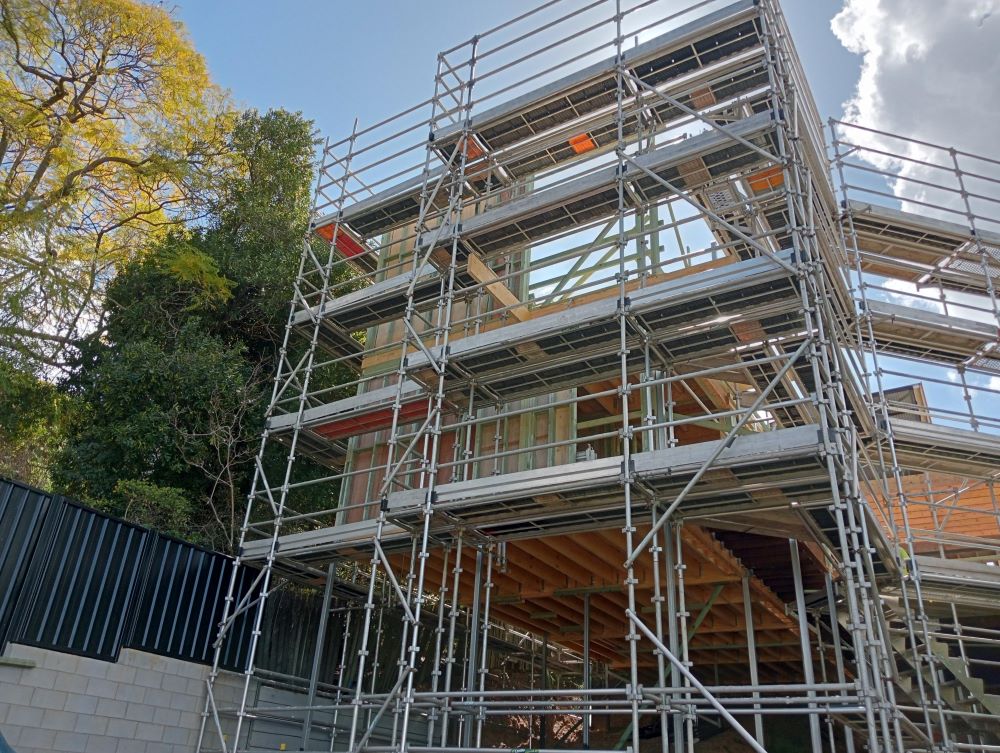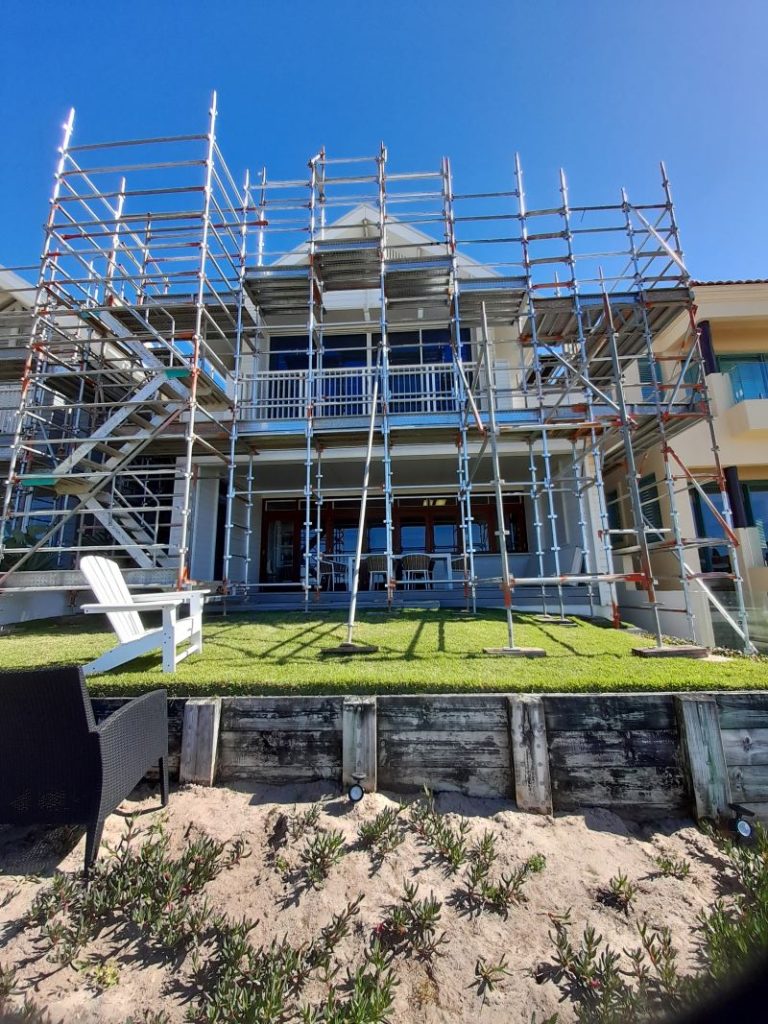Ultimate Guide to Selecting the Right Scaffolding: Aluminium vs. Steel for Construction Projects
Choosing the appropriate scaffold for your construction or renovation project is vital for ensuring both safety and operational efficiency. Among the most prevalent options are aluminium scaffolding and steel scaffolding. Each material features distinct characteristics, advantages, and suitability for varying project needs. This comprehensive guide offers an in-depth comparison between these two widely used scaffolding types, emphasizing their features, benefits, and ideal applications. The goal is to help you make an informed choice that aligns with your specific project requirements, ultimately ensuring the success of your construction endeavors.
When assessing scaffold options, it’s crucial to grasp the unique benefits and features of aluminium compared to steel scaffolding. We will provide a thorough analysis of these attributes, empowering you with the knowledge necessary to make a well-informed decision that aligns with the specific demands of your project, thereby safeguarding the safety and efficiency of your construction activities.

Leverage the Advantages of Aluminium Scaffolding for Superior Construction Efficiency
Aluminium scaffolding is highly regarded for its lightweight design and remarkable ease of use, making it an excellent choice for projects requiring frequent relocations and quick setups. The components of aluminium scaffolding are considerably lighter than those constructed from steel, which facilitates easier transportation and maneuverability at the work site. This feature proves particularly beneficial for contractors needing to operate in confined spaces or frequently reposition scaffolding materials, thus ensuring a seamless workflow and enhanced operational efficiency throughout the project lifecycle.
Additionally, aluminium scaffolding is well-known for its impressive corrosion resistance. This characteristic makes it a preferred option for outdoor projects or environments with high humidity, guaranteeing that the scaffold retains its structural integrity and aesthetic appeal over time. The corrosion-resistant properties of aluminium scaffolding contribute significantly to its long-term performance and reliability, which is crucial for projects exposed to adverse weather conditions or moisture, ultimately allowing safer operations and reduced maintenance needs.
The setup and dismantling of aluminium scaffolds are generally quick and straightforward, as the components are designed for simple assembly. This efficiency can yield significant time savings on-site, especially for projects with tight deadlines. By minimizing the time required for setup, construction teams can focus more on effectively and safely completing their tasks, thereby enhancing overall productivity and ensuring the success of the project.
Unlock the Exceptional Strength and Stability of Steel Scaffolding for Heavy-Duty Applications
Steel scaffolding is celebrated for its superior strength and impressive load-bearing capacity, rendering it a highly durable option for construction projects that demand robust support. This material is meticulously engineered to withstand significant weight and challenging conditions, providing a stable platform for workers, even in demanding environments. Its rigidity and overall strength make it the preferred choice for projects involving heavy machinery or substantial materials, ensuring safety and reliability at elevated heights while minimizing the risk of accidents.
The durability of steel scaffolding represents a critical advantage, particularly in extreme weather conditions or high-traffic areas where the scaffold may endure heavy usage. Unlike lighter materials, steel scaffolding is designed to resist bending or deformation, thereby ensuring a secure working environment for personnel. This reliability instills confidence and a sense of safety among construction teams, enabling them to work effectively and with peace of mind, knowing they are well-supported.
Furthermore, steel scaffolding is recognized for its cost-effective longevity. Although the initial investment may be higher when compared to aluminium, the durability and extended lifespan of steel scaffolding make it a financially prudent choice over time. This material can withstand repeated use, resulting in fewer replacements or maintenance requirements, thus delivering significant savings in the long run and making it a strategic investment for any construction project.
When deciding between aluminium and steel scaffolding, it is essential to evaluate the unique requirements of your specific project. Important factors to consider include material weight, scaffold height and size, as well as the environmental conditions present at the job site, all of which will greatly influence your final decision.
Consulting with your scaffold hire company can provide invaluable insights, assisting you in selecting the most appropriate option for your project’s specific demands. For additional information on when scaffolding is necessary and the types of projects that may require it, be sure to check out our article on when to hire scaffolding.
Key Factors to Analyze When Selecting Scaffold Material for Your Construction Project
There are several crucial factors to consider when evaluating the choice between aluminium and steel scaffolding. A thorough understanding of each scaffold material’s strength and durability, weight and portability, and cost and affordability will empower you to make a well-informed decision that aligns with your project’s specific needs and constraints, ensuring that you choose the most effective solution for your construction requirements.
Assessing the Strength and Durability of Aluminium vs. Steel Scaffolding
Both aluminium and steel scaffolding are acknowledged for their strength and durability; however, they exhibit distinct qualities that may influence your choice. Steel scaffolding is typically regarded as having superior strength and load-bearing capacity compared to aluminium scaffolding. The robust composition of steel enables it to withstand heavy loads and maintain stability in challenging construction scenarios, making it a reliable option for demanding projects.
On the other hand, aluminium scaffolds also offer commendable strength and durability; however, they may not support exceptionally heavy loads as effectively as their steel counterparts. Therefore, it is critical to assess your project’s weight requirements to determine which scaffold material best meets your operational needs and safety standards, ensuring both functionality and safety on the job site.
Analyzing Weight and Portability Attributes of Scaffolding Options
Aluminium scaffolds have a distinct advantage in terms of weight and portability. Their lightweight nature allows for significantly easier handling and transportation compared to their heavier steel counterparts. This feature is particularly beneficial for smaller-scale projects or situations where scaffolding needs to be repositioned frequently, as it minimizes physical strain on workers and enhances overall productivity on the job site.
Although steel scaffolds may be heavier, they still provide a degree of portability; however, they typically require more effort and manpower for transportation. Understanding the relevant weight and portability aspects of your project will help ensure efficient and safe scaffold use throughout your operations, leading to improved dynamics and productivity on the job site.
Explore the Unique Benefits of Aluminium Scaffolding for Your Construction Projects
After evaluating different scaffold materials, aluminium scaffolding presents a variety of unique advantages that make it a favored choice for numerous construction and renovation projects.
Experience the Lightweight Design of Aluminium Scaffolding for Effortless Handling and Enhanced Efficiency
A significant advantage of aluminium scaffolding is its lightweight design. In comparison to steel scaffolding, aluminium is considerably lighter, improving its manageability and transportability. This characteristic not only accelerates the assembly and disassembly process but also contributes to a more streamlined workflow, ultimately reducing the overall project timeline. Additionally, the ease of handling significantly boosts worker productivity, minimizing the risk of fatigue-related accidents and enhancing overall safety on-site, which is crucial for maintaining a secure working environment.
Exceptional Corrosion Resistance for Long-lasting Performance in Diverse Environments
Aluminium scaffolding showcases outstanding corrosion resistance, making it an ideal choice for various environmental conditions. Unlike steel, which is susceptible to rust and degradation, aluminium’s natural ability to resist corrosion ensures that it maintains its structural integrity even when exposed to moisture or outdoor elements. This feature is particularly beneficial for projects conducted in damp or humid settings, guaranteeing that the scaffold remains safe and effective throughout its use, thereby minimizing the risk of structural failures or safety hazards.
Rapid Assembly and Disassembly Processes to Boost Project Efficiency
Another significant advantage of aluminium scaffolding is its rapid assembly and disassembly capabilities. The lightweight components, user-friendly connectors, and efficient locking mechanisms simplify the setup process. This efficiency is especially valuable in time-sensitive projects or when scaffolding needs to be relocated frequently. The rapid assembly and disassembly associated with aluminium scaffolding save time and help reduce overall labour costs, providing an economic advantage for project managers aiming to optimize their resources and enhance overall project timelines.

Discover the Unmatched Benefits of Steel Scaffolding for Heavy-Duty Construction Needs
Steel scaffolding offers numerous advantages that make it a preferred choice among contractors and builders when selecting the most suitable scaffold for construction projects.
Experience Unmatched Strength and Load Capacity with Steel Scaffolding Systems
One of the primary advantages of steel scaffolding is its unparalleled strength and load capacity. Steel is renowned for its exceptional durability and ability to support significant weights, making it ideal for projects where scaffolding must bear heavy loads. Steel scaffold systems are meticulously designed to provide workers with a stable and secure platform, ensuring their safety while operating at elevated heights and in challenging environments, thus minimizing the risk of accidents and injuries.
Remarkable Durability Against Extreme Environmental Conditions for Long-lasting Use
Steel scaffolding is resilient against a variety of environmental factors, making it suitable for harsh conditions. It can endure adverse weather elements, including high winds, heavy rainfall, and extreme temperature variations. This durability ensures the scaffold remains stable and secure, thereby establishing a safe working environment for construction teams. Whether addressing projects such as gutter replacements or other tasks requiring scaffolding in demanding conditions, steel scaffolding is engineered to withstand the rigours of the job, ensuring reliability and safety throughout the project lifecycle.
Explore the Cost-Effective Longevity of Steel Scaffolding Solutions
Steel scaffolding is widely recognized for its exceptional longevity and overall cost-effectiveness. Its inherent durability ensures that the scaffold can withstand numerous construction projects over extended periods without significant degradation. Unlike other materials, steel scaffolding does not wear out quickly, reducing the need for frequent replacements or repairs. This long-lasting nature allows for substantial savings in the long run, making steel scaffolding a wise investment for any construction operation.
To determine the most suitable scaffold material for your specific project, it is essential to carefully evaluate your needs, consult with industry professionals, and consider safety standards and budgetary constraints. This thorough assessment will ensure you select the best option for your operational requirements.
Key Steps to Selecting the Perfect Scaffold for Your Construction Project
Selecting the right scaffold for your project requires a meticulous assessment of your unique needs. By thoroughly evaluating your project requirements, consulting with professionals, and considering safety and budget constraints, you can make a well-informed decision that aligns with your operational goals and enhances project efficiency.
Thoroughly Analyze Your Project Requirements for Optimal Scaffold Selection
Begin by assessing the specifics of your project and the tasks that necessitate scaffold support. Key considerations include the height and configuration of the structure, the expected duration of the project, and any specialized requirements that may arise based on the nature of the work being performed.
For example, scaffolding for an apartment complex will have distinct specifications and requirements compared to scaffolding or guard rails needed for gutter replacements. By comprehensively understanding your project needs, you can determine the appropriate type and configuration of scaffold that will best suit your operational objectives, ensuring on-site safety and efficiency while minimizing risks and potential hazards.
The Importance of Professional Consultation for Informed Scaffold Selection
Engaging with experts, such as Cando Scaffolding, is highly advisable when navigating the complexities of scaffold selection. Our extensive industry experience assures you receive invaluable guidance, helping you meet safety standards and regulatory requirements throughout your project. By leveraging our expertise, you can make informed decisions that enhance safety and efficiency on your job site.
Contact us today or request a quote to begin the process of selecting the ideal scaffold for your project, ensuring successful construction outcomes that meet all your operational needs.
The post-Scaffold Choices: Aluminium vs Steel for Your Project appeared first on https://writebuff.com/.
The Article Aluminium vs. Steel: Choosing the Best Scaffold for Your Project Was Found On https://limitsofstrategy.com
The Article Aluminium vs. Steel: Best Scaffold Choices for Your Project First Appeared ON
: https://ad4sc.com


This guide on aluminium versus steel scaffolding strikes a chord, especially when we consider the broader implications of material choices in construction. It’s fascinating how the decision can influence not just project efficiency but also worker safety and environmental impact. For instance, aluminium scaffolding is not only lighter and easier to transport but can also contribute to reduced carbon footprints due to its recyclability.
Your guide touches on an important aspect of construction safety and efficiency that often gets overlooked. The choice between aluminium and steel scaffolding is not just a matter of material preference; it significantly impacts the safety practices on site. For instance, I’ve seen projects where the lightweight nature of aluminium scaffolding allowed for quicker setups and takedowns, particularly in renovations where site space is limited. This flexibility can be crucial in urban settings.
This guide touches on an important aspect of construction that often gets overlooked until it’s too late: the choice of scaffolding can significantly impact safety and efficiency on the job site. I’ve worked with both aluminium and steel scaffolding in different projects, and I’ve found that the decision often hinges on not just the project’s scale but also environmental factors.
You’re spot on about scaffolding being that behind-the-scenes hero in construction. It’s often the unsung workhorse that can make or break a project. The choice between aluminium and steel really does create a ripple effect—both in terms of safety and efficiency, like you mentioned.
Your exploration of the differences between aluminium and steel scaffolding is particularly timely, as sustainable construction methods are increasingly becoming a priority in our industry. While both materials have their merits, I find it interesting how their respective lifecycles and environmental impacts are often overlooked in discussions about scaffolding.
You raise an important point about the lifecycle and environmental impacts of both aluminium and steel scaffolding, which often don’t get the attention they deserve. I find it fascinating how the material we choose can reflect our values around sustainability in construction.
You bring up a great point about the often under-discussed lifecycles and environmental impacts of aluminium and steel scaffolding. It’s something that really deserves our attention, especially as we strive for more sustainable construction practices.
It’s great to see you engage with the nuances of aluminium and steel scaffolding, especially around their lifecycles and environmental impacts. You’re right that these conversations often skip over those critical aspects.
Your exploration of aluminium versus steel scaffolding is both timely and essential, especially considering the complexities involved in selecting appropriate materials for construction. It’s intriguing to see how these two options reflect broader themes within the construction industry, particularly when it comes to sustainability, labor efficiency, and safety regulations.
It’s interesting to think about how the choice between aluminium and steel scaffolding can serve as a microcosm for larger trends in construction. When we talk about sustainability, for instance, aluminium’s lightweight nature can lead to lower transportation costs and reduced energy use on-site, which many companies are increasingly prioritizing.